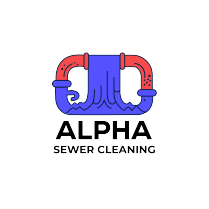24/7 EMERGENCY SERVICES
317 Loring Road Levittown NY 11756
Roof Drain

Roof drainage systems play a vital role in preserving the structural integrity and functionality of buildings. Proper roof drainage ensures rainwater is collected and directed away from the building to prevent water damage, leaks, and other related issues. Here’s an in-depth look at roof drains, their types, installation, maintenance, and other crucial details.
What Are Roof Drains?
A roof drain is a system designed to collect rainwater and direct it away from the roof of a building. This prevents water pooling, which can cause significant damage such as leaks, mold growth, and structural weakening over time. Roof drains are typically found on flat or low-sloped roofs, as these types of roofs do not allow water to run off naturally.
Key Components of a Roof Drain System
-
Drain Inlet
The entry point where water collects. It is often covered with a strainer or grate to prevent debris from clogging the system. -
Drain Pipe
Connects the inlet to the rest of the drainage system, channeling water toward the desired disposal location. -
Strainer or Dome
Prevents large debris like leaves and branches from entering and clogging the system. -
Overflow Drains
Secondary drains act as a backup if the primary system becomes overwhelmed or clogged. -
Drainage Piping
Directs water away from the roof and typically connects to downspouts or underground drainage systems. -
Insulation and Flashing
Protects the roof from leaks around the drain and ensures thermal efficiency.
Types of Roof Drains
-
Internal Roof Drains
- Found on flat or low-sloped roofs.
- Water flows to the center of the roof, where it enters the drain.
- Piping runs through the building’s interior to carry water to the ground or storm sewer system.
- Advantages: Aesthetic appeal, less exposed piping.
- Disadvantages: More complex installation and maintenance.
-
Scuppers
- Openings at the edges of flat roofs that allow water to flow off.
- Typically connected to downspouts or splash blocks.
- Advantages: Simple, cost-effective.
- Disadvantages: Less effective for large volumes of water.
-
Gutter Systems
- Installed along the edges of sloped roofs.
- Water flows from the roof into gutters and is directed to downspouts.
- Advantages: Easy to install and maintain.
- Disadvantages: Requires regular cleaning to prevent clogs.
-
Siphonic Roof Drains
- Utilize air pressure to create a siphon effect for faster water removal.
- Advantages: High efficiency, reduced piping requirements.
- Disadvantages: Requires precise engineering and maintenance.
Materials Used in Roof Drains
- Cast Iron: Durable, corrosion-resistant, suitable for heavy-duty applications.
- PVC/Plastic: Lightweight, cost-effective, easy to install.
- Stainless Steel: High resistance to corrosion and aesthetics.
- Aluminum: Lightweight and corrosion-resistant but less durable under heavy loads.
Steps for Roof Drain Installation
-
Design and Planning
- Assess the roof’s slope, size, and drainage requirements.
- Determine the number and placement of drains based on water flow and building codes.
-
Preparation
- Ensure the roof surface is clean and free of debris.
- Mark locations for drain installation.
-
Cutting and Fitting
- Cut openings in the roof for the drain.
- Fit the drain assembly and secure it in place.
-
Sealing and Flashing
- Apply waterproof flashing around the drain to prevent leaks.
- Seal all joints with appropriate adhesives.
-
Connection to Piping
- Connect the drain to the building’s plumbing or drainage system.
- Test the connection to ensure no leaks.
-
Final Testing
- Pour water to check flow efficiency and ensure proper installation.
Common Issues with Roof Drains
-
Clogging
- Debris like leaves and dirt can block drains.
- Regular cleaning and strainer installation can mitigate this.
-
Leaks
- Poor installation or wear and tear can lead to leaks.
- Periodic inspections and prompt repairs are essential.
-
Freezing
- In colder climates, standing water in drains can freeze and block water flow.
- Heated systems or proper insulation can prevent this.
-
Corrosion
- Over time, metal components may corrode.
- Use corrosion-resistant materials and coatings.
Maintenance Tips for Roof Drains
-
Regular Cleaning
- Remove debris from the drain and strainers.
- Check for blockages in piping.
-
Inspect for Damage
- Look for cracks, rust, or loose fittings.
- Address issues immediately to prevent further damage.
-
Seasonal Preparations
- Before rainy or snowy seasons, ensure the system is functioning efficiently.
- Install de-icing cables in colder regions.
-
Professional Inspection
- Schedule annual inspections with roofing or plumbing professionals.
Importance of Proper Roof Drainage
-
Prevents Water Damage
- Stagnant water can lead to leaks, mold growth, and structural issues.
-
Extends Roof Lifespan
- Proper drainage reduces wear and tear on roofing materials.
-
Protects Building Integrity
- Prevents water from seeping into walls, ceilings, and foundations.
-
Compliance with Building Codes
- Many regions mandate proper drainage systems for safety and environmental reasons.
Cost Considerations
-
Installation Costs
- Depends on roof size, type of drain, and material.
- Internal drains tend to be more expensive than gutters or scuppers.
-
Maintenance Costs
- Includes regular cleaning, repairs, and inspections.
- Siphonic systems may have higher maintenance due to their complexity.
-
Replacement Costs
- Factors include the material of the drain and extent of damage.
Eco-Friendly Drainage Solutions
-
Green Roofs
- Utilize vegetation to absorb rainwater, reducing runoff.
-
Rainwater Harvesting
- Collects water for reuse, such as irrigation or flushing.
-
Permeable Paving
- Directs water into the ground, reducing stormwater runoff.
Conclusion
Roof drains are critical components of any building’s drainage system, ensuring safety, functionality, and longevity. By selecting the right type, performing proper installation, and maintaining the system, property owners can protect their investment and avoid costly damages. Whether it’s a commercial building with internal drains or a residential home with gutters, the importance of effective roof drainage cannot be overstated.
Newsletter
Drain cleaning involves removing clogs, debris, and buildup from pipes to restore proper water flow. It ensures smooth drainage, prevents blockages, and protects plumbing systems from damage. Professional drain cleaning uses tools like hydro jetting or augers for efficient and lasting results.
Design By Oll Solutions

